Watching a surgical demo on a blurry screen is frustrating. Trainees miss critical details, and the learning opportunity is lost. This ambiguity can hinder skill development and confidence.
4K resolution supports teaching and live demos by delivering exceptional clarity that allows trainees to see fine anatomical details and complex surgical maneuvers with precision. This, combined with accurate color, enhances comprehension, improves engagement, and accelerates the learning curve for surgeons.
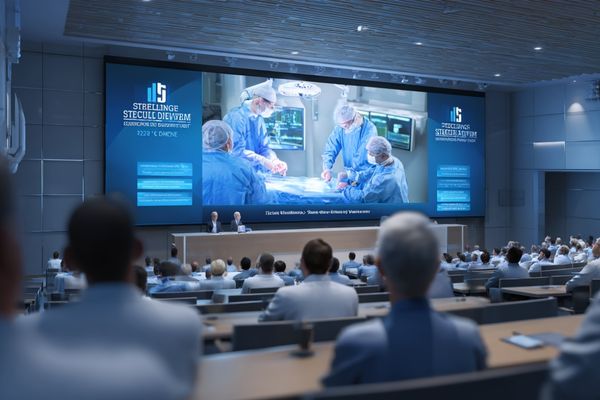
The goal of any surgical demonstration is to transfer knowledge effectively. For decades, this process was limited by the quality of video technology. Observers in an auditorium or even in the same operating room had to settle for a fuzzy, indistinct view. 4K resolution1 changes everything. With four times the pixels of standard High Definition, it provides a level of detail that makes observation almost as good as performing the procedure itself. In this guide, we will explore exactly how this technology transforms surgical education2, from enhancing the view of intricate techniques to enabling effective remote training.
Why is 4K resolution particularly valuable for surgical education and live demonstrations?
In a live demo, students in the back row cannot see the fine sutures. This makes the entire educational experience ineffective. They leave with an incomplete understanding of the procedure.
4K resolution is valuable for surgical education because its high pixel density—over 8 million pixels—ensures that every detail of the surgical field remains crystal clear, even on a large screen. This allows every observer, regardless of their position, to see intricate maneuvers with precision.
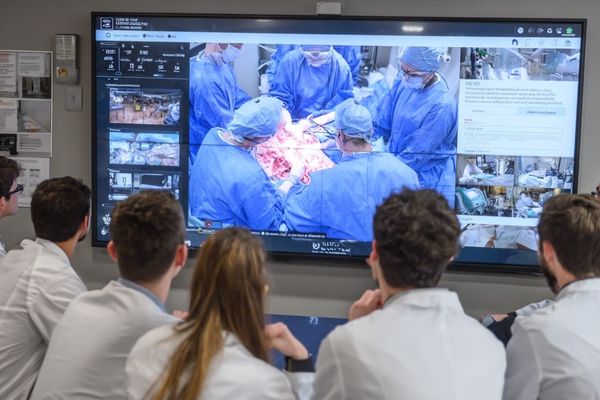
The fundamental advantage of 4K resolution lies in its sheer number of pixels. A 4K Ultra HD display3 has a resolution of 3840 x 2160, which totals approximately 8.3 million pixels. This is four times the pixel count of a Full HD (1920 x 1080) display, which has just over 2 million pixels. In the context of a live surgical demonstration4, this difference is profound. When an image is projected onto a large screen in an auditorium, a lower-resolution image becomes soft and pixelated. Details are lost. With 4K, the image retains its sharpness and clarity. This means trainees can clearly distinguish the layers of tissue during a delicate dissection, see the exact placement of a microscopic suture, or identify tiny blood vessels. It makes the entire learning experience more immersive and effective. For these large-scale teaching environments, a display like our MS550P ensures that every seat in the house is the best seat.
How does 4K clarity enhance the observation of surgical techniques and fine tissue details?
An instructor tries to show the difference between a nerve and a vessel. On a standard HD monitor, they look like identical white lines. The teaching point is completely missed.
4K clarity enhances observation by providing enough pixel density to resolve fine textures and distinct boundaries between different tissue types. This allows trainees to clearly see delicate structures like nerves, fascia, and microvasculature, which are often indistinguishable on lower-resolution displays.

The term "clarity5" in medical imaging refers to how well a display can resolve fine details. This is directly related to its resolution. In surgery, success often depends on the ability to identify and preserve critical structures that may be only a fraction of a millimeter wide. On a Full HD monitor, these structures might be represented by just a few pixels, making them appear as a blurry line. A 4K display6 has four times the pixels in the same area, allowing it to render these same structures with sharp, well-defined edges. This is essential for teaching complex dissection techniques where trainees must learn to navigate tissue planes. With 4K, they can see the subtle differences in texture and sheen that distinguish a nerve from surrounding connective tissue. This high level of detail turns passive observation into active learning, as students can truly understand the anatomical landscape. Our MS321PC provides this exceptional clarity directly in the operating room, allowing for real-time, detailed
Resolution Impact on Detail
| Resolution | Pixel Count (Approx.) | Visual Effect on Fine Structures | Teaching Value |
|---|---|---|---|
| HD (720p) | 1 million | Blurry, details are lost | Low, unsuitable for complex surgery |
| Full HD (1080p) | 2 million | Acceptable, but fine details may merge | Moderate, basic procedures are visible |
| 4K UHD (2160p) | 8.3 million | Sharp, distinct, and well-defined | High, ideal for all surgical education |
What role does accurate color reproduction at 4K play in teaching complex procedures?
During a live demo of a tumor resection, the surgeon points out ischemic tissue. On the monitor, it looks the same color as the healthy tissue. The trainees cannot learn this vital visual cue.
Accurate color reproduction at 4K resolution is critical because it allows trainees to distinguish between different types of tissue based on subtle variations in color. This is essential for identifying landmarks, assessing tissue viability, and understanding procedures like tumor resections.
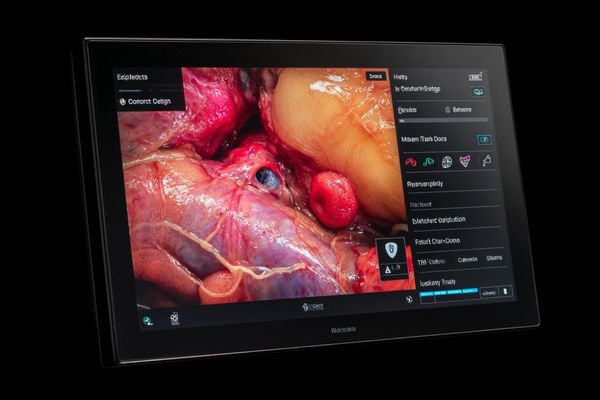
While resolution provides the detail, color provides the context. In surgery, the color of tissue is a rich source of information. A deep red may indicate healthy, well-perfused tissue, while a pale or bluish tint could signal a lack of blood flow (ischemia). The yellowish color of fat is distinct from the pinkish hue of muscle. When teaching a complex procedure like a tumor resection, it is vital that the display can reproduce these colors with absolute fidelity. A display with a poor color gamut or inaccurate calibration might wash out these subtle differences, making the image confusing. A high-quality 4K medical display[^71] with a wide color gamut7 (covering standards like DCI-P3) ensures that the image on the screen is a true representation of the surgical field. Trainees can learn to associate specific colors with specific conditions, a skill that is fundamental to good surgical judgment. The MS275P is designed to deliver this combination of high resolution and precise color fidelity.
How does 4K resolution benefit remote learning and multi-site surgical training?
A hospital hosts a virtual training session. The video stream is heavily compressed, making the surgical field a pixelated mess. Remote participants gain little value from the experience.
4K resolution benefits remote learning by providing a high-quality source image that retains exceptional detail even after video compression for streaming. This allows trainees at other sites to see the procedure with nearly the same clarity as if they were physically present.
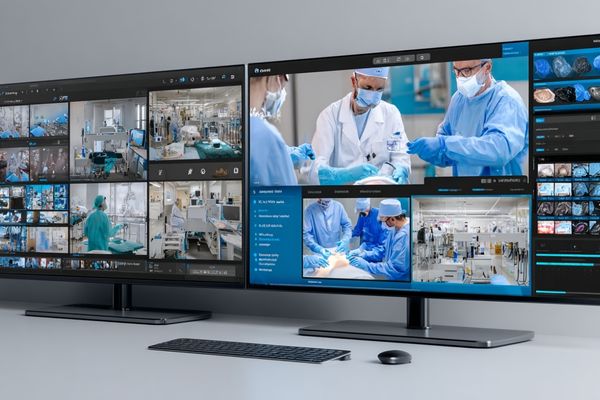
The growth of telemedicine8 and remote education has made multi-site surgical training a reality. However, the effectiveness of this training depends entirely on the quality of the video stream. When you stream video, it must be compressed to travel over the internet. This compression process always involves some loss of data. If you start with a low-resolution Full HD source, the final compressed image a remote viewer sees can be significantly degraded. But if you start with a 4K source9, there is much more data to begin with. Even after compression, the resulting image is far sharper and more detailed than a compressed HD stream. This means a surgical trainee in another city or country can watch a live procedure and still see the fine details of the anatomy and the surgeon’s actions. This makes remote mentoring, grand rounds, and collaborative workshops far more effective. A large-screen display like our MS430PC is ideal for a conference room where a team is participating in a remote session.
In what ways do 4K-enabled monitors like those from Reshin improve audience engagement during live demos?
The lights are dim in the auditorium, but the glare on the monitor washes out the image. The audience in the back rows quickly loses interest. The valuable teaching opportunity is wasted.
Our 4K monitors improve audience engagement by combining high resolution with high brightness, excellent contrast, and anti-glare technology. This produces a vibrant, immersive image that is clearly visible from any angle, even in a brightly lit room, compelling the audience to stay focused.
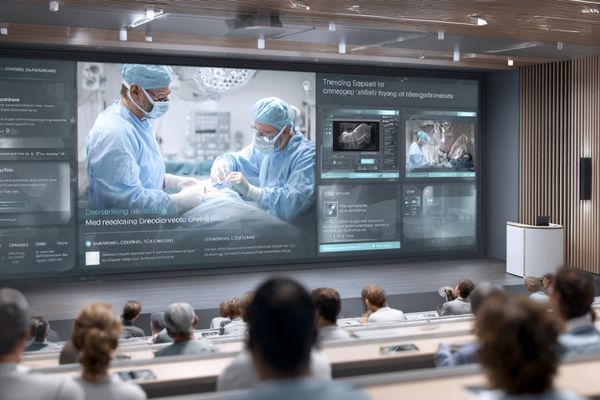
An engaging presentation is a memorable one. In a live surgical demo, audience engagement is not just about keeping people entertained; it is about maximizing knowledge retention. A 4K image10 is inherently more engaging than a lower-resolution one because it feels more real and immersive. However, resolution alone is not enough. The display itself must have features that support a great viewing experience for a large group. High brightness is needed to cut through the ambient light of an operating room or auditorium. A high contrast ratio11 ensures that deep blacks and bright whites are distinct, giving the image depth. An effective anti-glare surface minimizes distracting reflections from overhead lights. Finally, wide viewing angles guarantee that the image looks accurate in terms of color and brightness, even for viewers seated far to the side. Models like our MS321PB are engineered with these features to create a powerful visual experience that holds an audience’s attention.
Factors Improving Audience Engagement
| Feature | Why It Matters | Impact on Learning |
|---|---|---|
| 4K Resolution | Provides lifelike detail and clarity. | Creates an immersive experience, improves focus. |
| High Brightness | Overcomes ambient lighting in any room. | Ensures the image is always visible and clear. |
| High Contrast | Defines details in dark and bright areas. | Improves depth perception and anatomical understanding. |
| Anti-Glare/Wide Angles | Minimizes reflections; keeps image consistent. | Provides a good view for everyone, regardless of seat location. |
Can 4K technology reduce learning curves for medical students and junior surgeons?
A junior surgeon is hesitant during a procedure. They struggle to reconcile the blurry image on the monitor with the anatomical diagrams they studied. This uncertainty slows their progress.
Yes, 4K technology can significantly reduce learning curves by eliminating the visual ambiguity of lower-resolution images. When trainees can clearly see the correlation between anatomical theory and real-world practice, they build confidence and proficiency much faster.
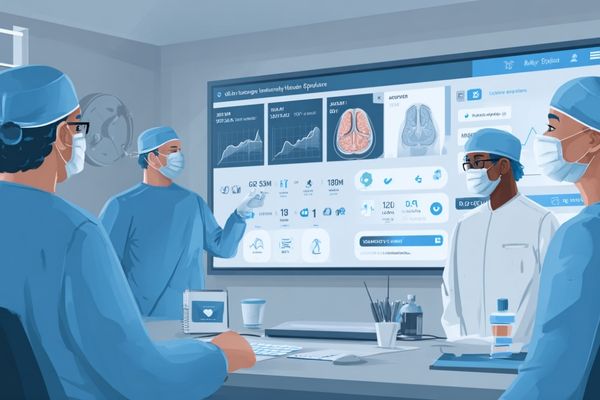
The learning process for a surgeon is about building a strong mental model of human anatomy and surgical procedures. This model is built through a combination of textbook study and practical observation. When the observational link is weak because of poor image quality, the learning process slows down. A trainee has to use cognitive energy just to interpret a blurry image, which distracts from learning the actual technique. 4K technology12 removes this barrier. It presents a view of the surgical field that is so clear and detailed that it perfectly aligns with anatomical diagrams. This helps the trainee’s brain make connections more quickly. They can see exactly how a procedure is performed, build accurate muscle memory13 through observation, and gain confidence in their own abilities. This acceleration of the learning curve is one of the most powerful benefits of adopting a 4K ecosystem. Even in a training lab with multiple stations, providing clear displays like our MS247SA as auxiliary screens ensures every participant has a high-quality view, supporting a faster and more effective learning environment for all.
Conclusion
In summary, 4K resolution is a transformative tool in surgical education. It provides the clarity, detail, and color accuracy needed to turn passive observation into active, effective learning.
📧 Want to bring 4K clarity to your surgical training programs? Contact Martin at martin@reshinmonitors.com to explore Reshin’s advanced surgical display solutions.
-
Explore how 4K resolution enhances surgical education by providing clearer visuals and improving learning outcomes. ↩
-
Discover the latest advancements in surgical education and how technology is shaping the future of training. ↩
-
Explore this link to understand how 4K Ultra HD displays enhance clarity and detail in surgical training. ↩
-
Discover how high-resolution displays improve the effectiveness of live surgical demonstrations and training. ↩
-
Understanding clarity in medical imaging is crucial for improving surgical outcomes and training, making this resource invaluable. ↩
-
Exploring the benefits of 4K displays can reveal how they improve detail and precision in surgical procedures, essential for medical professionals. ↩
-
Understanding color gamut is crucial for ensuring accurate color reproduction in medical displays, enhancing surgical precision. ↩
-
Explore how telemedicine enhances surgical training by providing remote access to expert guidance and real-time learning opportunities. ↩
-
Learn why starting with a 4K source improves video quality, ensuring that surgical trainees can see critical details during remote procedures. ↩
-
Explore how 4K images enhance presentations by improving engagement and knowledge retention, making your content more impactful. ↩
-
Learn about the significance of high contrast ratios in displays, ensuring clarity and depth in your presentations. ↩
-
Explore how 4K technology enhances surgical training by providing clearer visuals, improving learning efficiency, and boosting confidence. ↩
-
Learn about the role of muscle memory in surgical training and how it contributes to better performance and skill retention. ↩


